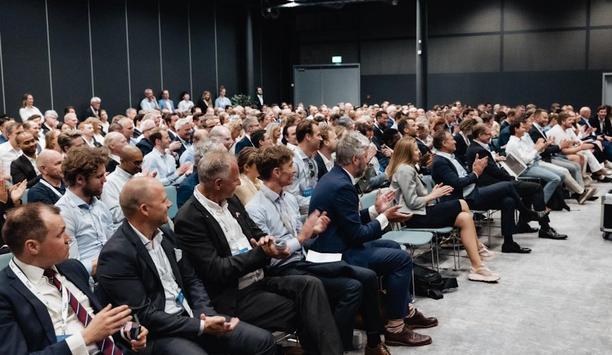Siemens Smart Infrastructure has released key insights into the divisive nature of the infrastructure transition in a new report, titled “Siemens Infrastructure Transition Monitor 2023: The Great Divide on The Path to Net Zero.” Data from the report reveals that there is limited alignment on priorities and how best to progress towards a decarbonised and resource-efficient world.
Whilst more than half of people surveyed believe the infrastructure transition is accelerating in their region, a quarter of participants-senior executives from seven major industry groups-said that progress is “too slow”, while 29 percent believe progress is “coordinated”, and 31 percent describe it as “on target”.
Guiding principles
The study set out to measure the current state of the infrastructure transition, including developments within the systems, services, buildings, and structures that are needed for industries, cities, and countries to function effectively. Data was collected through a global survey of 1,400 senior executives from 22 countries, as well as a series of in-depth interviews with providers and experts.
Data was collected through a global survey of 1,400 senior executives from 22 countries
The guiding principles behind the research outlined in the report include the necessity of the infrastructure transition to have a positive impact beyond decarbonisation. Secondly, smarter infrastructure integration is mandatory to affect change. Finally, action must be undertaken urgently and at top speed to avert disastrous global consequences.
Author's quote
Matthias Rebellius, managing board member of Siemens AG and CEO of Smart Infrastructure, said: “The infrastructure transition is accelerating, putting pressure on systems worldwide–from energy, to mobility, to buildings. Evolving the world’s infrastructure is of the utmost importance to enable progress towards decarbonisation, resource efficiency, and social wellbeing."
"Technology and digitalisation are instrumental to achieving this transition in a smart and sustainable way. At Siemens Smart Infrastructure we have already taken the first steps, creating innovative products, systems, solutions, and services to support the present and future challenges of urbanisation and climate change.”
Infrastructure transition
Despite the acceleration of infrastructure change, faster gain is needed at regional level
Despite the acceleration of the infrastructure transition, faster progress is needed at the regional (country) level to support a low-carbon world. Energy is a key priority as almost three-quarters of global greenhouse gas emissions come from the production, use and transportation of energy. According to the report, less than 10 percent believe their region (or country) to be “advanced, fully integrated, full-scale" on major energy goals of the transition.
According to McKinsey, decarbonise the world's energy system would require an estimated USD 275 trillion to make deep changes to electrical power generation, distribution, and consumption. Regulatory authorities are seen as having the greatest responsibility here (according to 31 percent of respondents), closely followed by the ultimate owners of assets, investors/shareholders (25 percent). Businesses (17 percent), politicians (13 percent), and citizens (13 percent) are all described as having some responsibility, but significantly less.
Lack of charging infrastructure
45% of respondents feel their cities have made progress in urging use of public transport
In the fight against climate change, cities have a major role to play. In the survey, half of respondents (51 percent) believe that being ahead in decarbonisation is a competitive advantage for a city. Decarbonising mobility, including public transport networks and commercial and private vehicles is a priority to reduce emissions. 45 percent of respondents feel their cities have made progress to encourage the use of public transport.
However, according to the report, 44 percent also believe that the privatisation of public transport would speed up decarbonisation. In terms of feasible mobility policies, 46 percent of executives believe that subsidies or taxes should be used to make electric cars cheaper than combustion engine vehicles. Currently, the lack of charging infrastructure was found to be the biggest barrier to widespread adoption of electric vehicles.
Decarbonisation of heating and cooling
Businesses are under pressure to decarbonise their business models, assets, and infrastructure. According to the report, nearly half have targets for Scope 1 and 2 emissions (47 percent). Only 40 percent think it is likely that they will meet their targets for the year ahead and just 44 percent expect to meet their 2030 targets. The report indicates that there could be a correlation between confidence in organisational growth prospects and confidence in decarbonisation targets.
Only 37% of respondents rated their organisation as mature or gone in improving the efficiency
Another key area of consideration for businesses is their buildings. Only 37 percent of respondents rated their organisation as mature or advanced in improving the energy efficiency of facilities and buildings, and just 30 percent said the same for electrification and/or decarbonisation of heating and cooling. There is, however, hope that businesses can leverage innovative solutions to enhance the performance and sustainability of their buildings without the need for extensive new construction, but progress needs to be quicker.
Technology and digitalisation to accelerate the transition
The report indicates that technology and digitalisation are key levers of a successful infrastructure transition. This is expected to have the biggest impact on decarbonisation, resource efficiency and wellbeing over the next three years. Key technologies that could have the biggest positive impact include AI-driven predictions and automation, virtual and augmented reality, and 5G mobile networks. According to nearly half of respondents, digitalisation has significant or massive potential to support progress in energy efficiency (48 percent), productivity (46 percent), and decarbonisation (45 percent) within their organisations.
Matthias Rebellius concluded: “Overall, the report confirms that whilst there is not always a strong alignment between citizens, business and government on the main requirements and goals of the infrastructure transition, it is critical to act now to mitigate the effects of climate change. Collaboration and digitalisation across the areas of energy, mobility and buildings will be key in paving the way forward toward a decarbonised world.”











